BMW Finally Nailed the American M3 Market with the E46 Generation
In the U.S. market, the third generation of the BMW M3 (E46) represents something of a goldilocks story, especially if you consider where the American version of the model started. That original M3 (E30) was a focused homologation car built specifically so BMW could respond on European racetracks to the challenge presented in the DTM race series by the Mercedes-Benz 190E 2.3-16.
As such, that M3 had several features that made it a commercial flop when it reached this market. The combination of its rather unrefined four-cylinder S14 engine, which barely delivered more performance than a 325i in most circumstances (especially American ones), and its high price meant that new E30 M3s sat unsold at American dealers long after production ended in December of 1990.
It’s safe to say that BMW North America learned its lesson for the second iteration of the M3 (E36) and insisted on a much more conservative model for the U.S. market. With fewer deviations from the base 325i, the American-market 1995 M3 cost only marginally more ($35,800, versus $30,850 for the 325i), and the result was a sales home run, selling close to 37,000 units in North America over five model years, compared to 5300 E30s over the same number of model years.
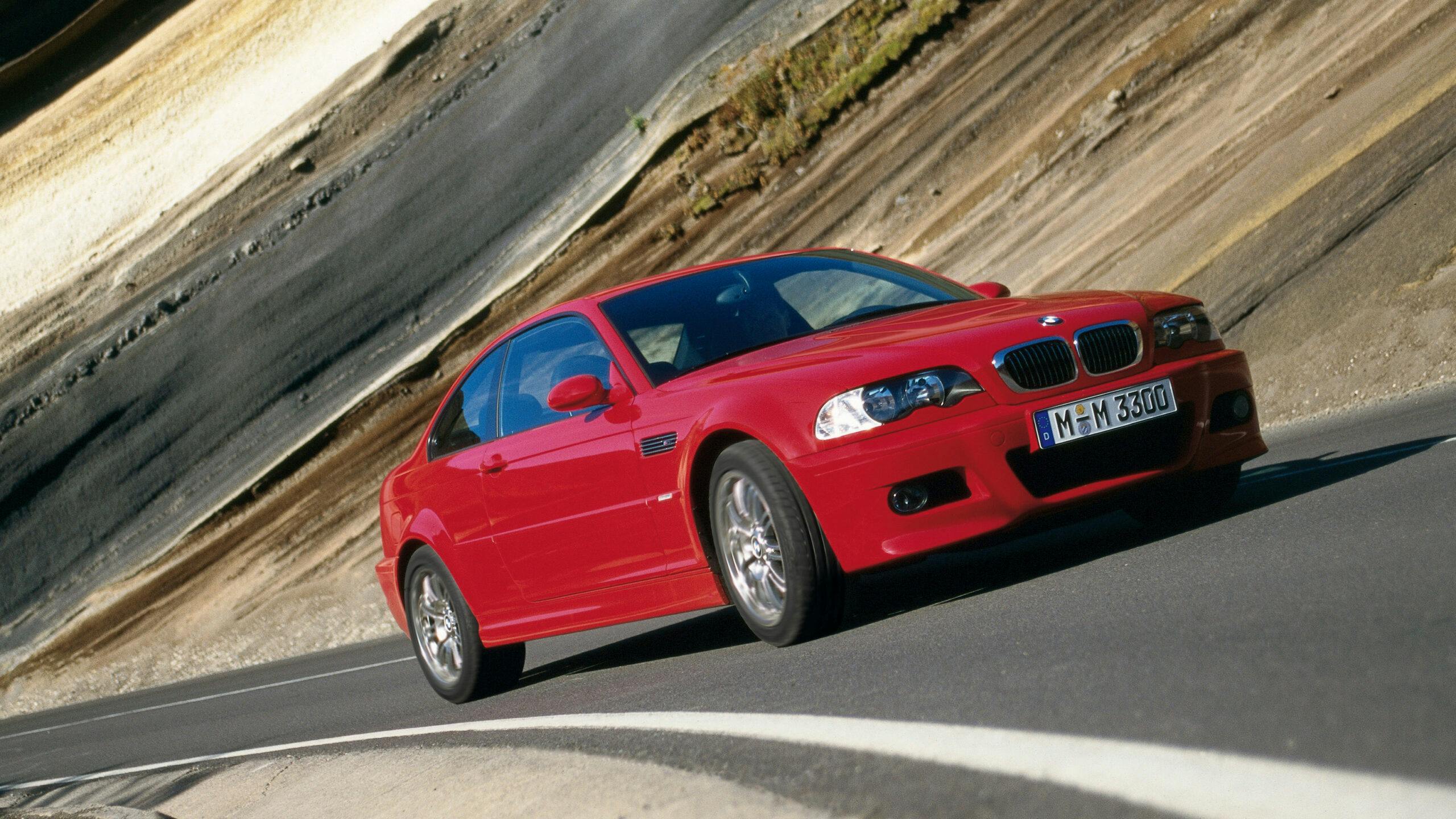
Against the European E36 M3’s $55,000 equivalent, the U.S. car saved a pile of money in the engine compartment, where a relatively mild upgrade version of the standard 325i (and later 328i) M50 engine lived in place of the exotic mill that the rest of the world enjoyed. That outside-the-U.S. engine, whose individual throttle bodies, 7600-rpm redline and variable valve timing on both intake and exhaust cams found in the later 3.2-liter iteration, continued the race-car-for-the road ethos of the E30’s S14 for overseas BMW customers.

With so many American enthusiasts coming around to the charms of the E36 M3, some couldn’t help but notice that the remainder of the world got a much more exciting engine. This practice was commonplace for American market versions of European cars as far back as the 1960s, but the arrival of three-way catalysts and electronic fuel injection meant that substantial engine variances by market were no longer necessary. Unless, of course, it was driven by cost rather than emissions, as it was for the E36 M3.
Heeding the calls of U.S. enthusiasts, BMW North America agreed that the M3 had won enough hearts here that American buyers would be willing to pay for the spicy engine, so the North American E46 M3 received the same powerplant as other versions of the car when it arrived for the 2001 model year. Called the S54, that engine was a world-class piece of equipment. Like its predecessor in Europe, it made more than 100 horsepower per liter, thanks to individual throttle bodies, continuously variable valve timing on both intake and exhaust cams, and a lofty 8000 rpm redline. Epitomizing the well-roundedness of most of BMW Motorsport’s best products, this engine was placed in a perfectly usable car with reasonable trunk space and interior room, answering the “one car to do it all” conundrum with conviction.
The E46 M3 was available exclusively in two-door form and featured upgraded suspension which widened the front and rear tracks by nearly two inches. This necessitated fender flares that gave the car a unique visual presence, along with the front and rear fascias and quad exhausts.

BMW North America’s calculations worked, and the E46 M3 went on to sell even better here than the E36 M3, moving almost 44,000 units in six model years. In retrospect, the car has become the epitome of an iconic BMW layout which did so much to establish the marque’s sporting credibility: the front-engine, rear-wheel drive, three-box car powered by a naturally-aspirated inline-six with individual throttle bodies.
Its replacement was powered by a V-8, so the S54 engine ended up as BMW’s last hot naturally-aspirated inline-six. As a result, the E46 M3 is now sought after by enthusiasts and, of course, values have increased as a result.
By how much they’ve increased depends on the specifics of the car, especially in today’s market. The cars fell into the typical pattern of depreciation that caused them to become a source of cheap thrills, and many examples accumulated high miles, tasteless modifications, and crash damage, so attrition has been significant. However, more than 85,000 E46 M3s were built, so it remains relatively easy to find undisturbed examples, provided that the buyer has some flexibility on configuration.
Like most driver’s cars, the E46 M3 has a strict value hierarchy based on the car’s equipment. As is the case with a Porsche 911, the purer the driving experience, the more valuable the E46 M3. This means that the bottom of the value heap is occupied by two-pedal convertibles, followed by stick-shift convertibles, and then the two closed variants. Convertibles are heavier and less rigid, and the difference is perceptible from behind the wheel. So for the serious driver, it’s worth a 33 percent higher buy-in for an M3 coupe.
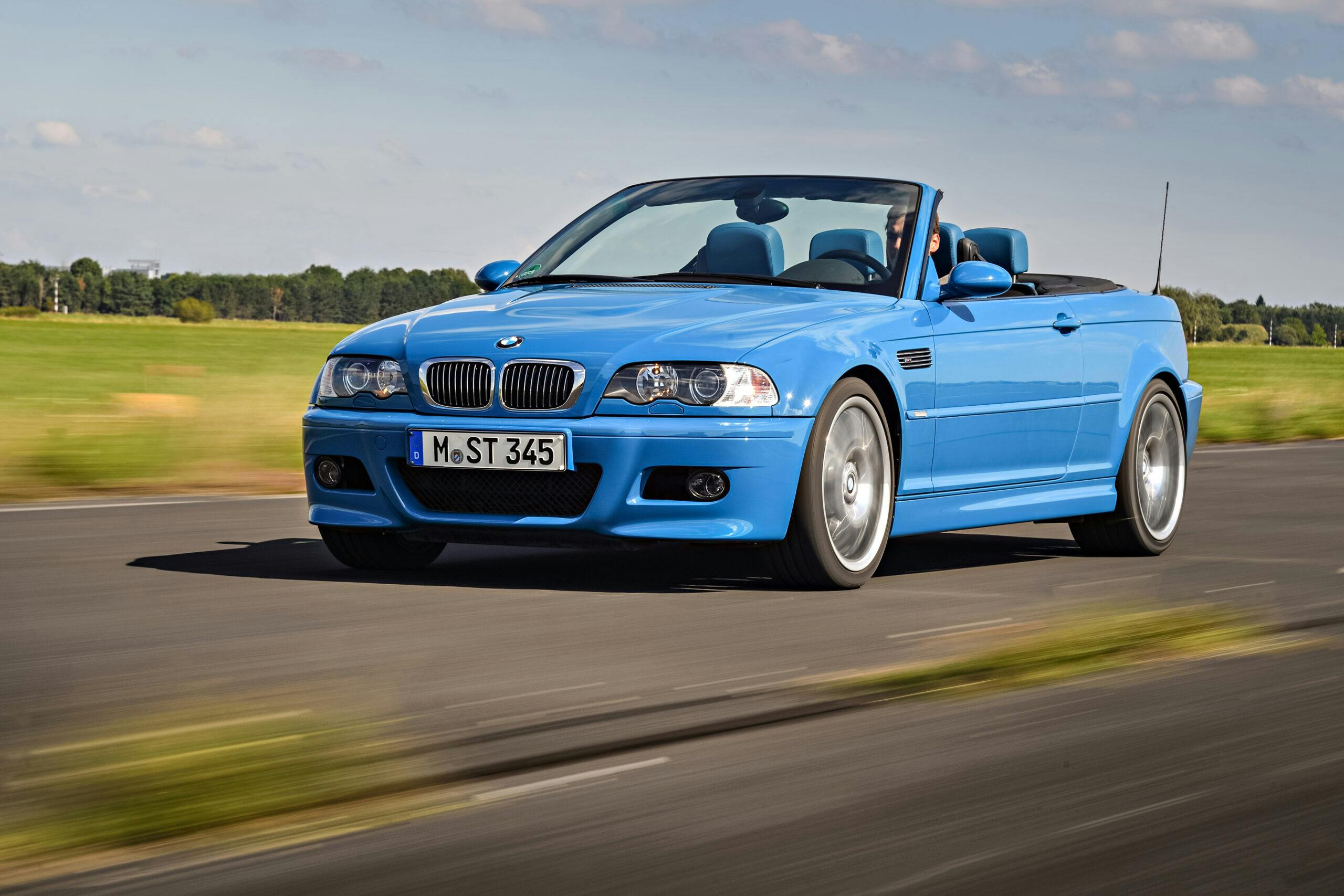
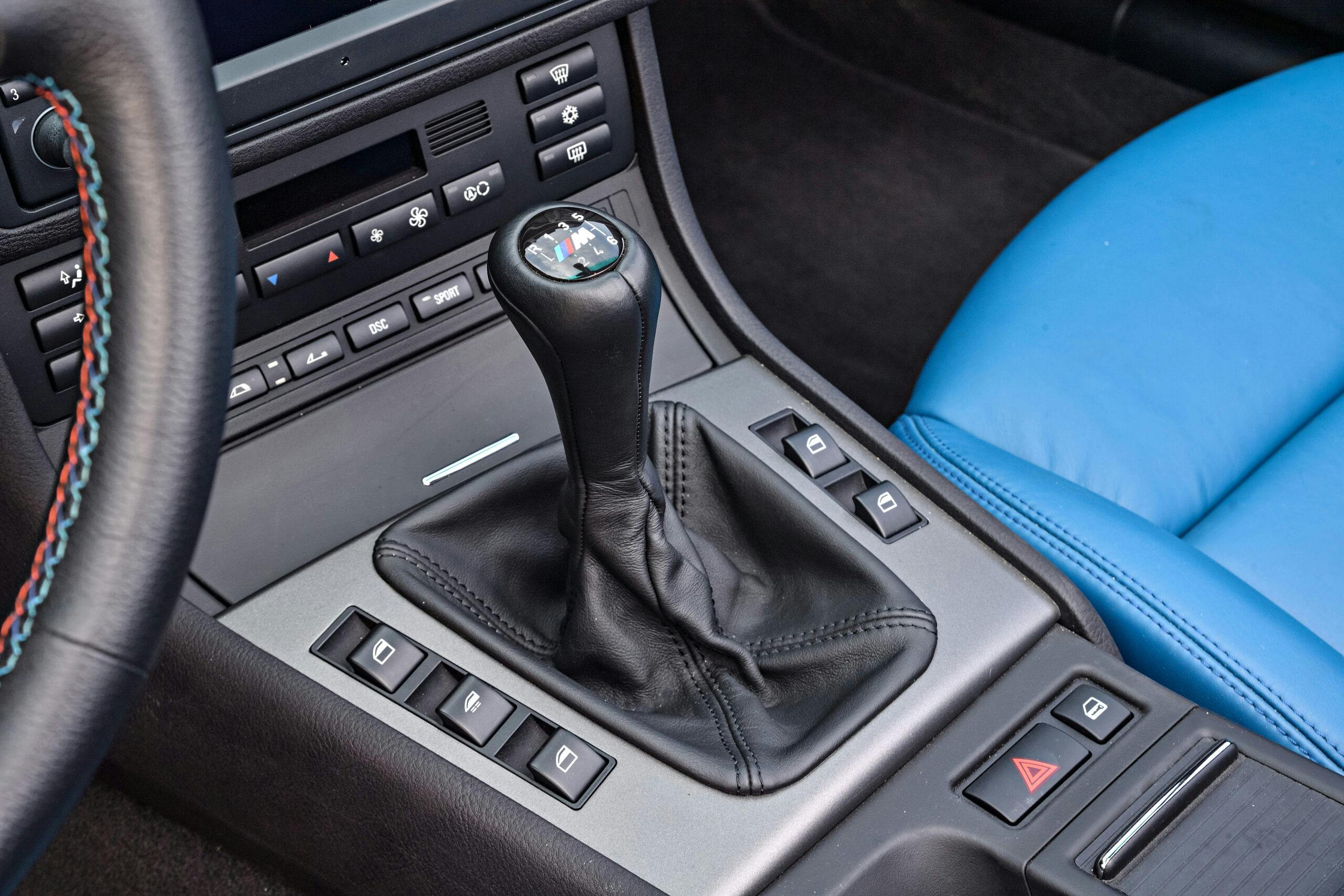
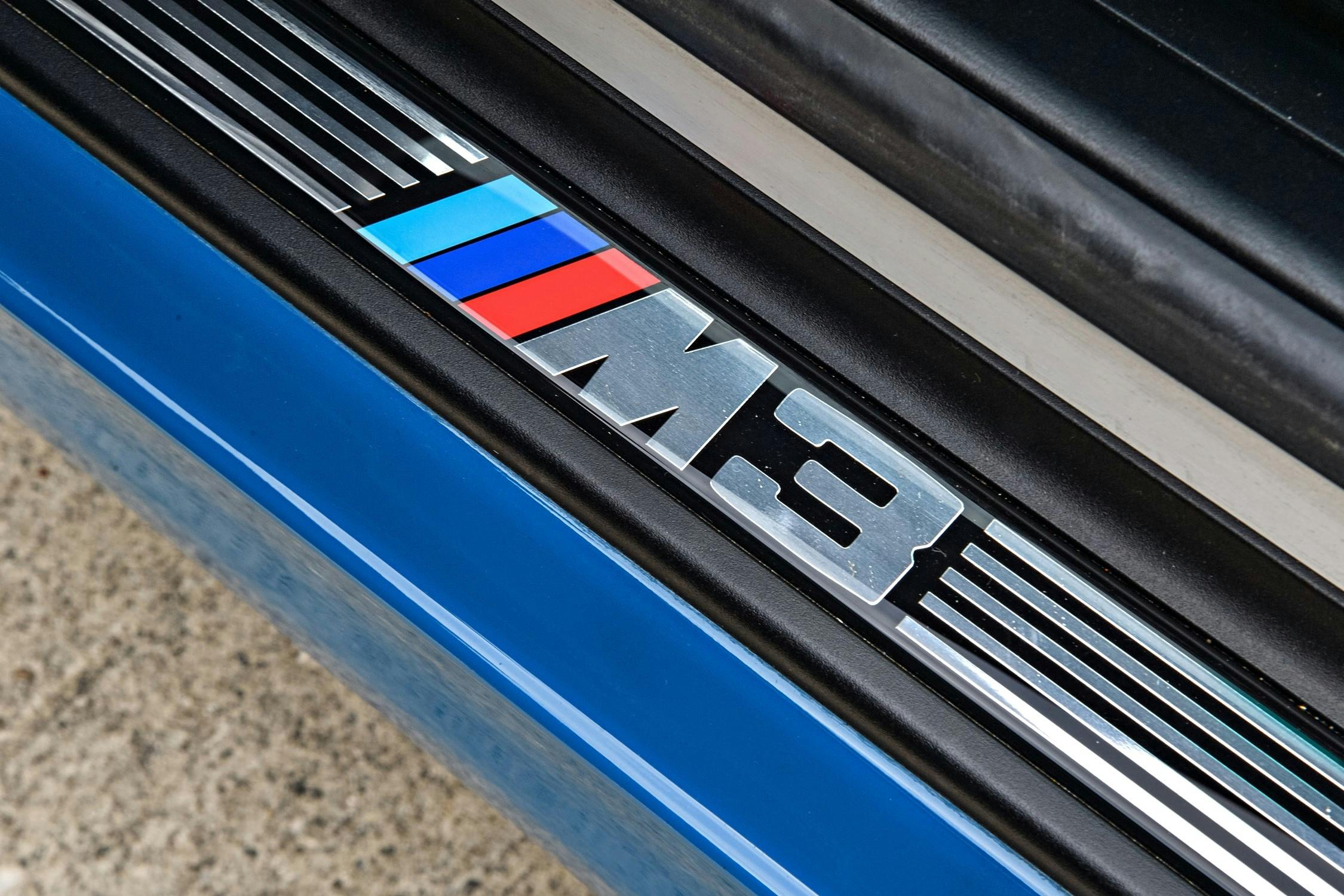
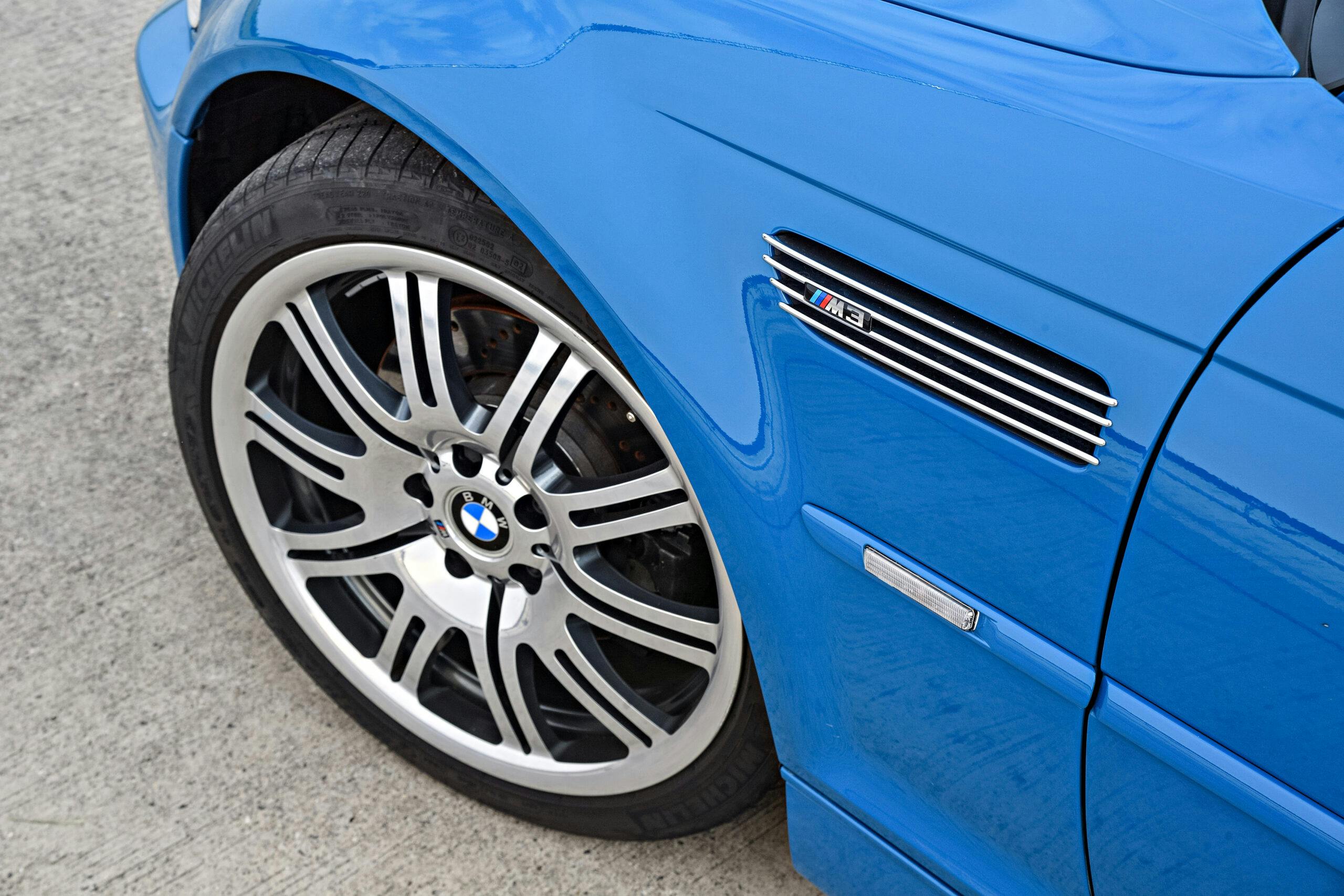
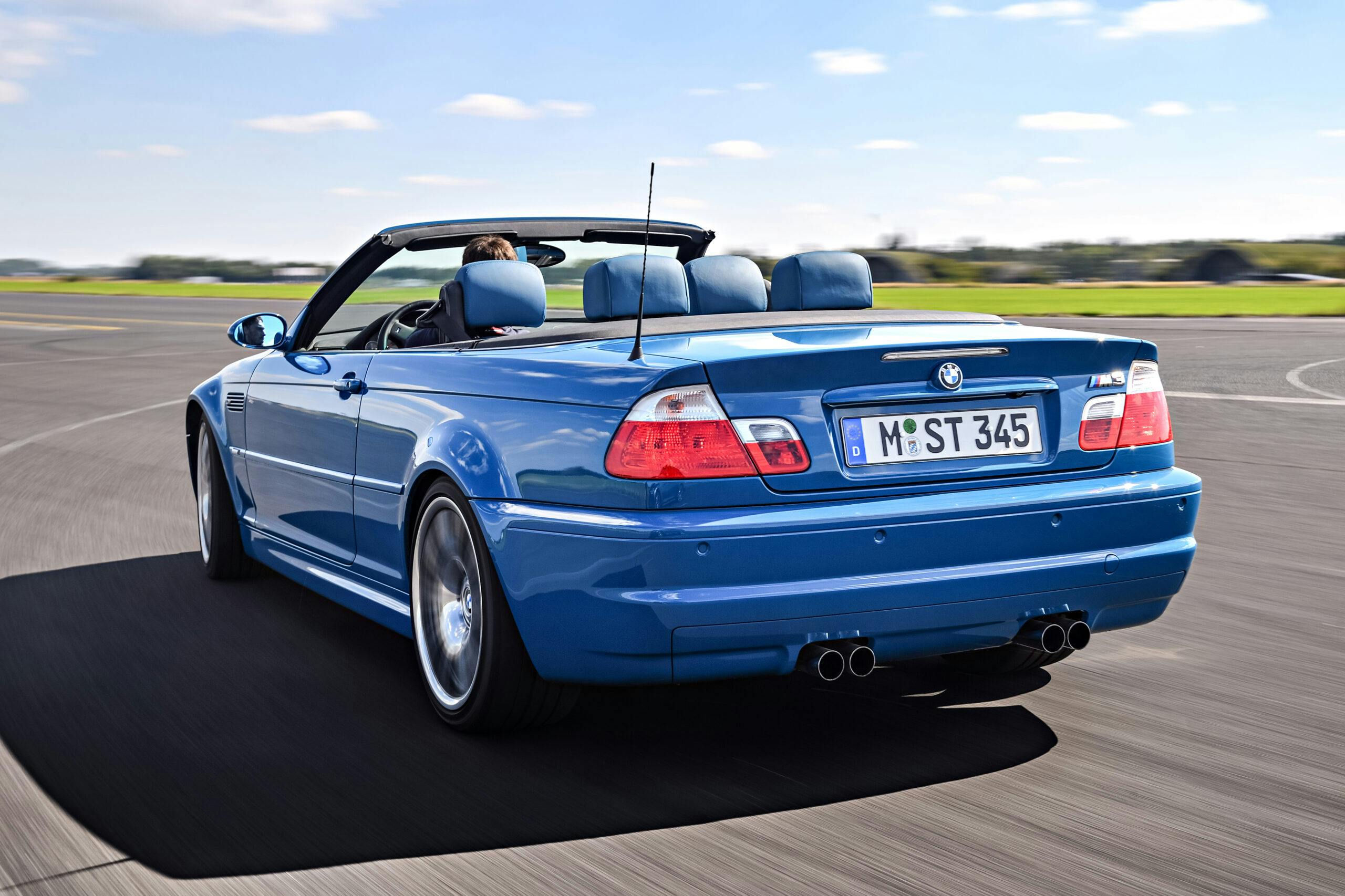
The two-pedal E46 M3 is equipped with the SMG (sequential manual gearbox), and employs a single-clutch automated manual transmission that is pretty dim-witted by today’s standards The upside of this arrangement is that the gearbox itself is the same between the two- and three-pedal variants of the car, so it is possible to convert an SMG car to a stick-shift for a few thousand bucks. You have to remove the SMG pump and actuators, and add a shift lever and clutch pedal. Hagerty price guide data shows that SMG E46 M3 coupes are worth about 25 percent less than stick-shifts, while converted SMG cars are worth about 15 percent less than cars that were born with three pedals.



Even working strictly within the realm of the manual-transmission coupe E46 M3s, however, there can be dramatic variations in value based on configuration. Some of these deliver meaningful benefits behind the wheel like the Competition Package (bigger brakes, revised suspension, faster steering ratio, different wheels, some trim differences), available exclusively in 2005 and 2006 on coupes, while others are aesthetic like colors, and still others that offer more subtle (or as some argue, imperceptible) improvement to the driving experience by being slightly lighter, like manual seats or sunroof delete (known as “slicktop”).
Laguna Seca blue, a color available from 2001-2004, carries a larger premium than any other single characteristic of an E46 M3. For example, an 18,000-mile stick-shift Laguna Seca blue coupe with gray interior and sunroof (slicktop and a black or brown interior would have been more desirable still) sold on BringaTrailer for $94,500 in January of this year, while a silver on black one with a sunroof and 15,000 miles sold for $50,000 in February, only to be relisted a couple months later by the same seller after the winner of the original auction failed to perform, at which time the car sold for $40,000.
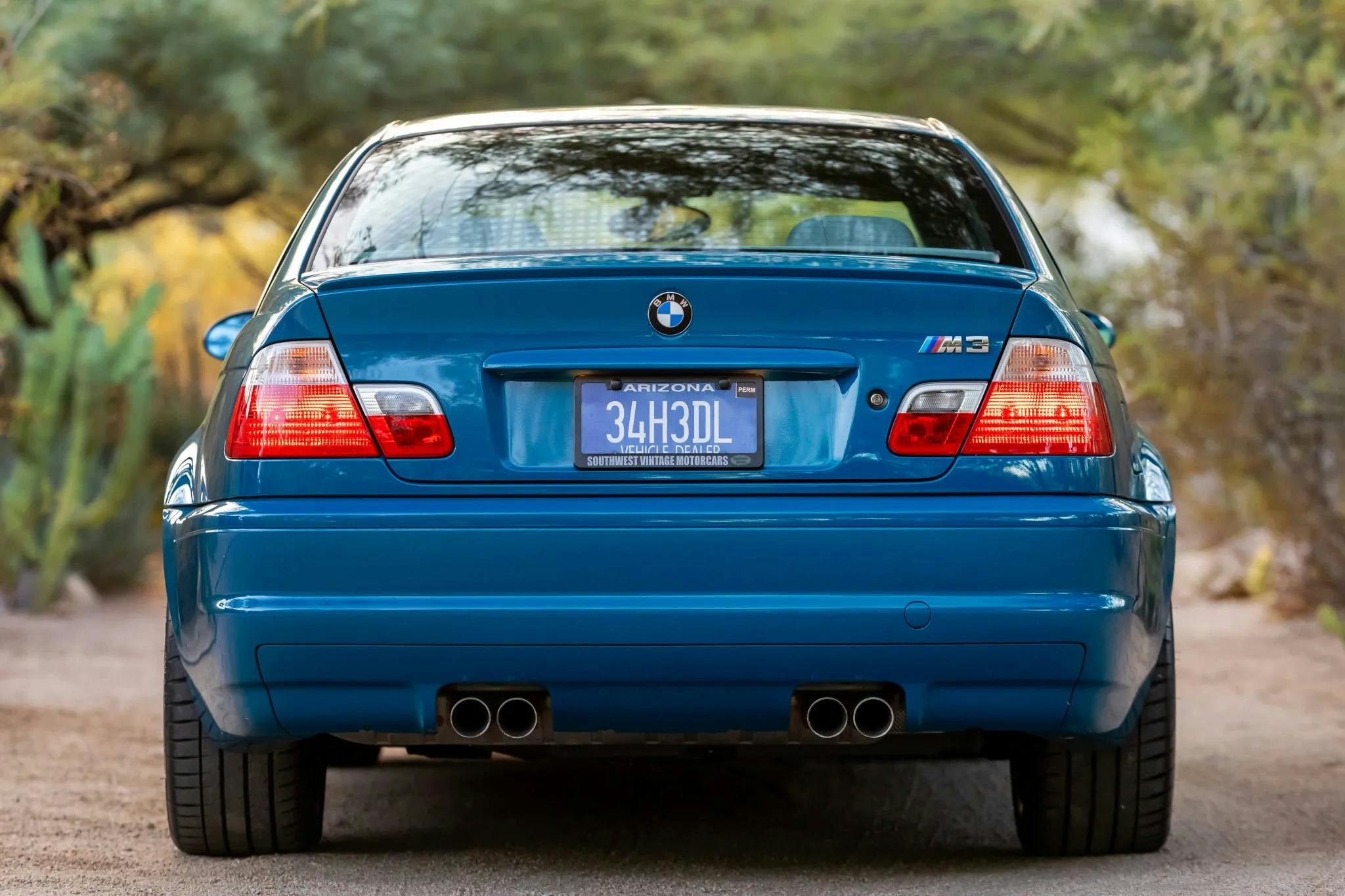
Perhaps more remarkable still, we (OTS and Company) listed a Laguna Seca blue slicktop with cinnamon interior (the only one delivered in North America) with 29,000 miles and it went for $117,600, setting the all-time record for an E46 M3 sale, on BaT. Although the winner of that auction ended up not being able to pay for it, we subsequently sold it to the underbidder for a lower, albeit still record-setting figure.
This sensitivity to configuration is common in enthusiast cars built in large numbers with widespread appeal, whether that’s Porsche 911s or 1960s muscle cars. It’s a polarizing phenomenon that draws out all sorts of commentary, ranging from the grumpy “Why would you pay twice as much just because of the color?!” to the more charitable, “It’s nice to finally see these cars being recognized by collectors.” The reality depends entirely on your perspective, and at a time where it’s increasingly difficult to enter the enthusiast car market, it’s nice to know that you can have the same driving experience as someone with much deeper pockets if you’re not dead set on Laguna Seca blue.

As the cars become more expensive, the mechanical condition becomes less important because the cost of repairs accounts for a smaller proportion of the car’s value. So for less expensive E46 M3s, buyers will be especially interested in whether the “big three” have been taken care of. The “big three” is a set of mechanical issues so common with E46s that collectively, they have a name. They are well understood but costly to rectify, and do materially affect a car’s value and the ownership experience.
VANOS (BMW-speak for variable valve timing) is probably the best place to start because it is the least invasive to fix and also has the most opportunity for sudden catastrophic failure. The VANOS has more than one failure mode and the system relies on oil pressure to alter the position of the camshaft relative to the cam sprocket. Failure of seals will prevent the system from developing this required oil pressure. This simply means the variable part of the variable valve timing no longer varies. The more alarming failure mode is that the tabs that locate the cam relative to the sprocket are known for shearing off with predictably scary results for cam timing, and thus piston and valve proximity. Beisan Systems makes retrofit kits that address this issue, and several other companies make copies, and the whole affair should cost $2000 to $3000.
The other common engine failure is the connecting rod bearings, which are known for wearing prematurely, an issue on most BMW M engines of this era. As with the VANOS failure, this problem is well-understood enough that kits with improved bearings exist, and this job should also cost $2000-$3000.
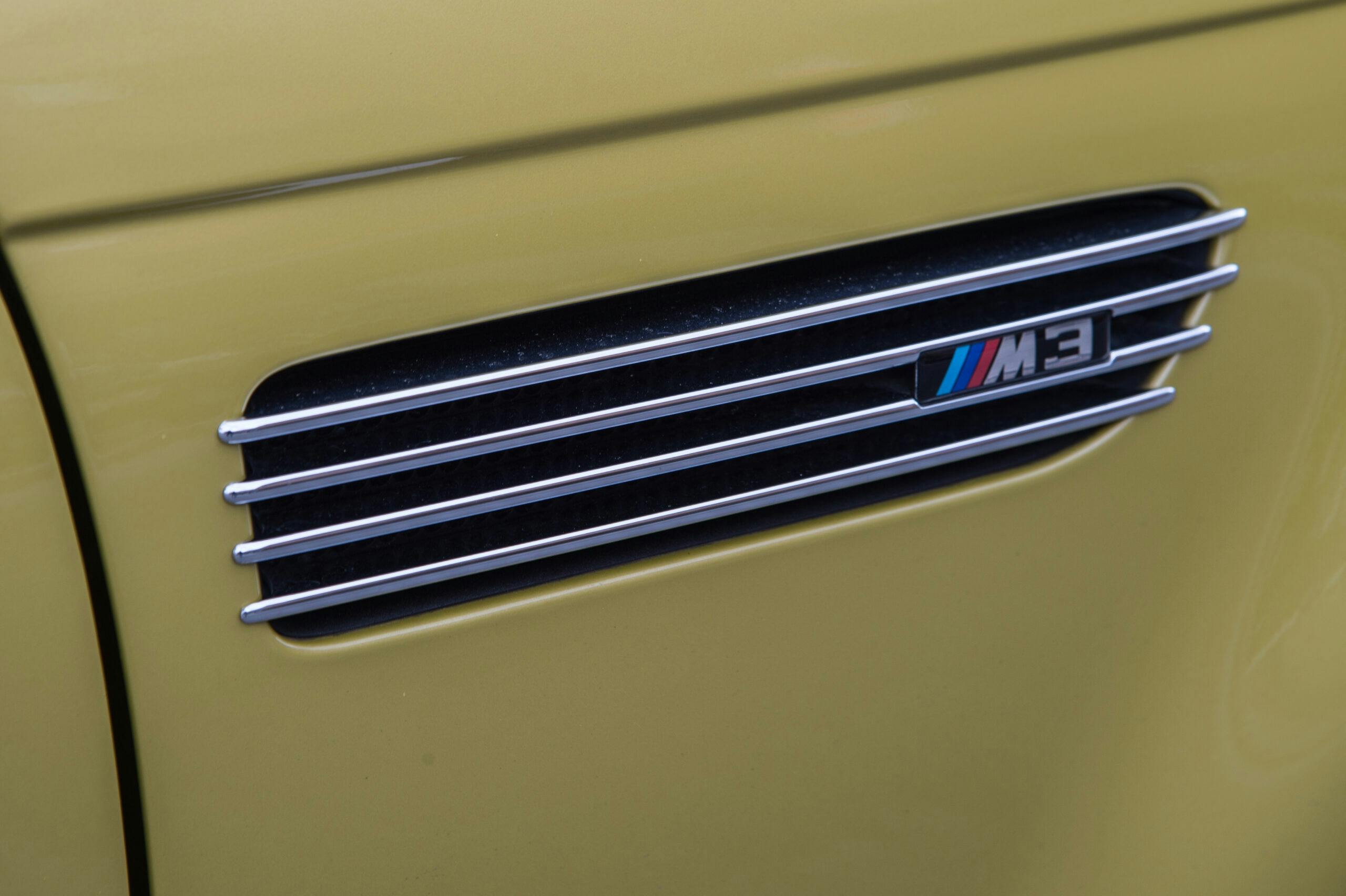
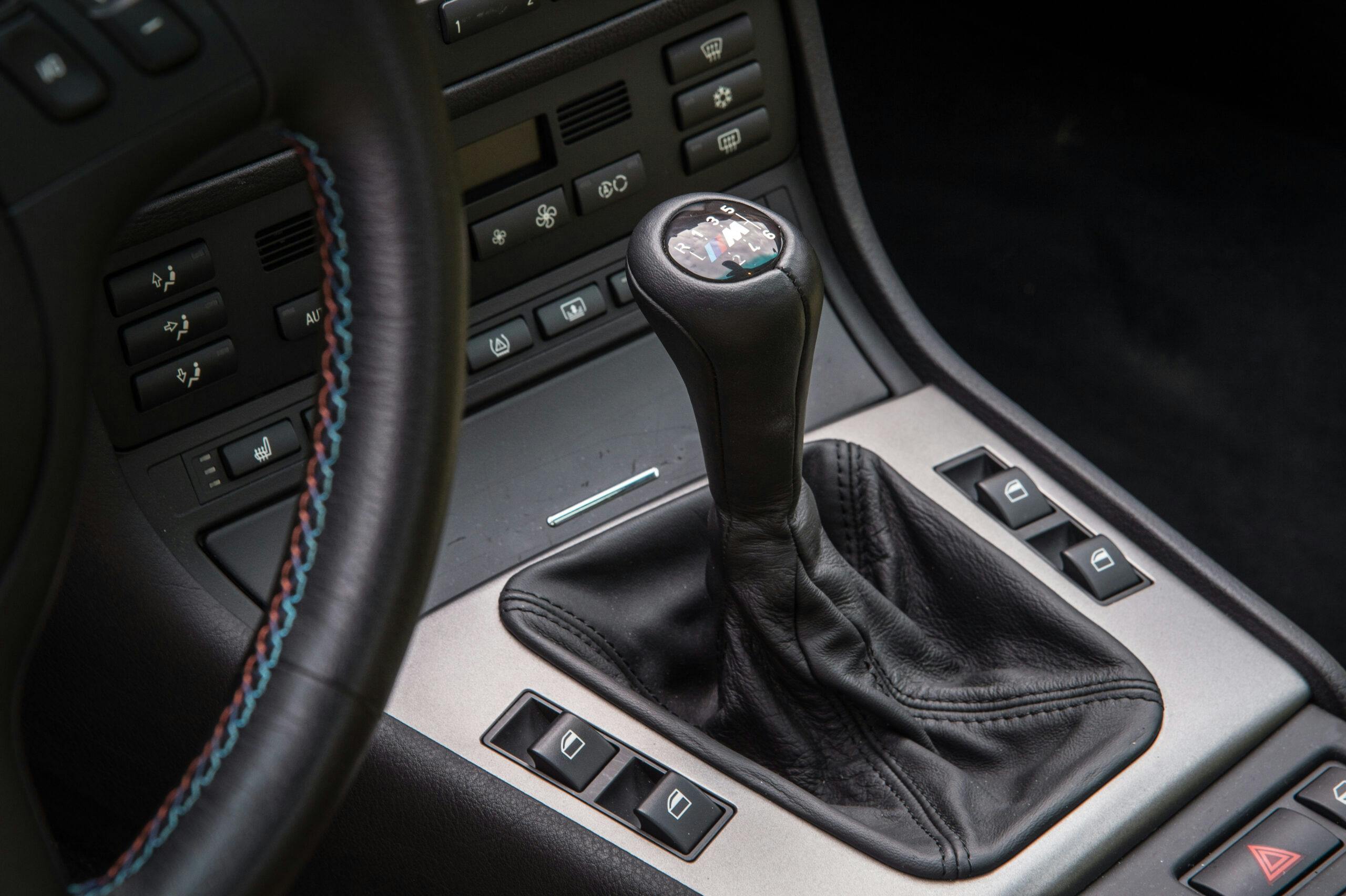
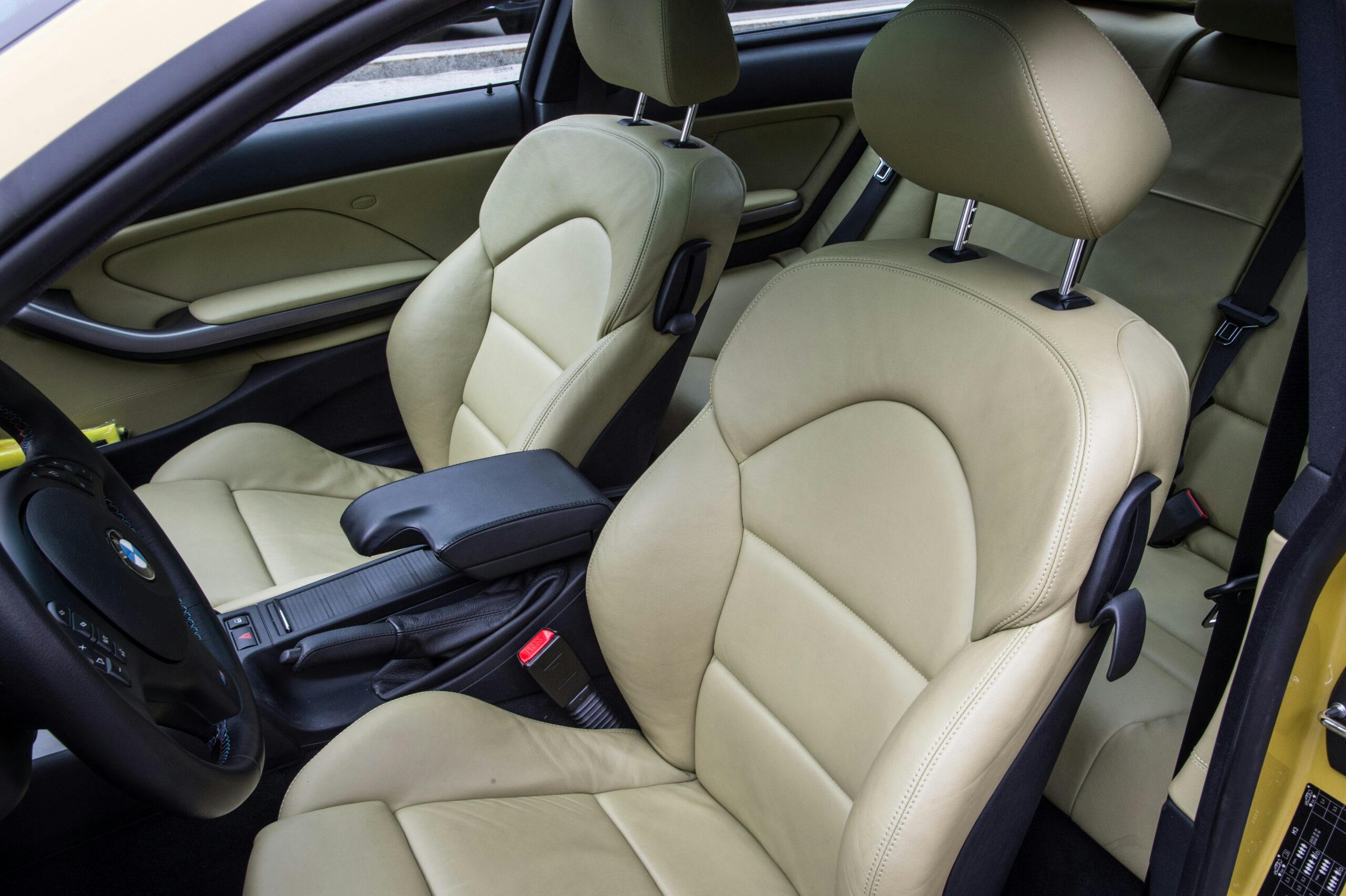
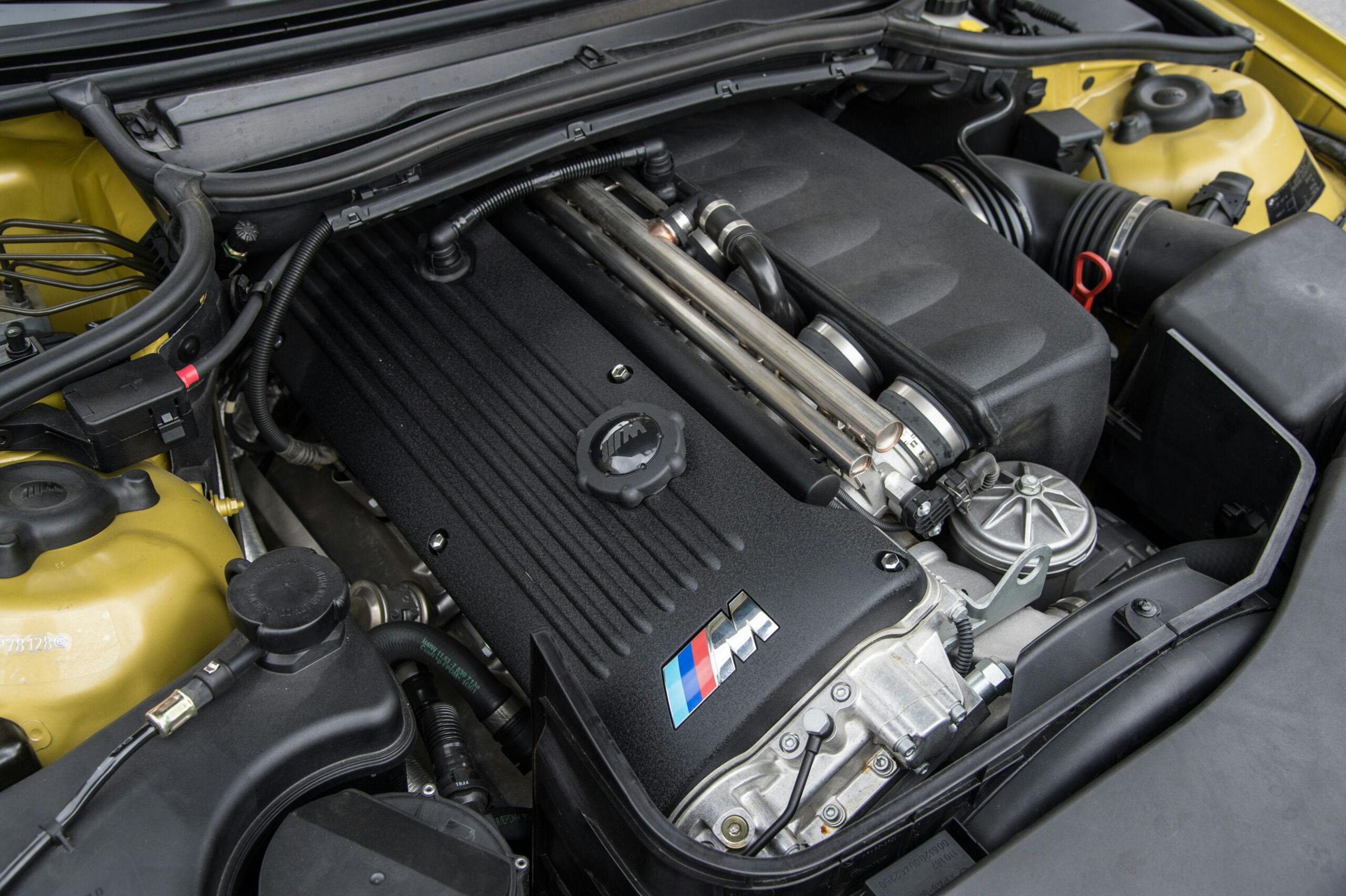
The last of the big three is known as rear subframe cracking, although this name is somewhat misleading as it’s not the actual subframe that cracks, but the floor pan of the chassis where the rear subframe attaches. It’s caused by metal fatigue (and probably miscalculation of the material properties or forces that would be present in this area), and resolution requires removing the rear subframe, including the suspension and differential, and welding in floor reinforcements. It costs, you guessed it, $2000-$3000.
Despite only being offered in two-door form, E46 M3s have tremendous variability in price driven by the many permutations in which it was available, and by the broad spectrum of condition and mileages in which they exist. This is a reflection of the model emerging as collectible cars, not merely enthusiast cars. Even if you’re a driving enthusiast set on three pedals and a coupe, they can still be found for less than $20,000, as long as you don’t need low miles, Laguna Seca blue, or a handful of other desirable colors. As the final naturally-aspirated, six-cylinder M car, the model occupies a unique position in BMW’s history, which gives it enduring appeal for both enthusiasts and collectors.
***
Check out the Hagerty Media homepage so you don’t miss a single story, or better yet, bookmark it. To get our best stories delivered right to your inbox, subscribe to our newsletters.



The sad thing is so many buy these cars thinking they can afford to buy them only to find they can afford to care for them. I have seen a number of customers burned by a used BMW.
A good one can be a great experience but a bad one can be the car from hell. I say the same thing about the Corvette like I own.
I’ve always thought these are great looking cars and have been tempted to buy one, but a friend who owned an LSB manual car in #3 condition warned me away. While values for excellent cars have risen somewhat, drivers are still hovering around mid-$20k. He never left his mechanic without paying four-figure repair bills and it doesn’t take many of those to equal a #3 car’s value. These are fairly heavy cars (3,400 lbs or so), so suspension, brake and tire wear can be significant, especially when they are driven like they should be. Non-scarcity means we probably won’t see dramatic value gains after the big initial bump that happened.
And for $60k, would you rather have a creampuff low-miles M3 that you’re afraid to drive or a 997.2 911 that you can use anywhere?
The E46 M3 is truly a modern classic one of the best cars of its era it’s where BMW peaked for sure
It definitely has that analog feeling that we miss in many cars now that only Honda and Toyota comes close to as well as the Miata
So many track prepared E46 M3 at the events I attend today. As noted, they so put in new rod bearings in the motor. There is a huge aftermarket for this car. Drop it off, write a check, and have a known great track car. I was at Thompson Speedway with COMSCC yesterday. There were probably 10 E46 M3’s there. The C5 Z06 is very popular (my student was in a C5) and of course many, many, Miatas.
I enjoyed multiple E46 but never found a M3 I could afford or wanted to buy. Instead, I bought an E46 ZHP and that served me very well as a fun commuter. The ZHP is an article to itself.
I have an 04 Vert with SMG. 76K miles. Carbon Black Metalic/Cinnamon/19″ wheels. I bought it because it was one of the best looking cars I had ever seen. The color combo is stunning. And, as a bonus, it is pretty darn quick. Driving from SoCal to Monterey car week the last few years has been fantastic. Automatic for LA traffic, flappy paddels once past Santa Barbara on PCH/101 with the top down. If you can wrench it yourself it is easy to maintain/repair, parts are commonly available and no more expensive than any BMW.
Great analog cars with a high revving motor. Problems with the Vanos system are quite real and expensive. These cars earned the Big Money Waster tagline. There is a reason I own a 97 Toyota Supra Turbo and not an M3.
My Dad bought a 2002 M3 new. Titanium Sliver, Emola Red interior, 6 speed, manual seats. It was cool. He was a cutter-grinder at Pontiac Motor, but before that he went to Germany after elisting in the Army and fell in love with a 356 in 1960. He always wanted a German sports car and after retiring, he test drove several, including AMGs, the 911, 944 turbo, then finally a 1998 M3. He loved the M3 and put down $500 at the local dealer. They called in 2002 and said they had a car for him. He called me and I went to the dealer with him to pick it up. It was big deal for my Dad. So much so that he couldn’t drive it home. Too nervous. I drove it home for him. He got used to it and drove on nice days. One year he drove it to Ohio to visit a friend and realized that long distances in the car hurt his back, so no more of that. It was a nice day car after that. We sold it with less that 20K miles around 2016 to a BMW enthusiast. It still had the original tires on it.
The E46 is truly BMW’s last M car, Analog feel, High revving, Non Turbo, and good looking ! No Chip Monk grill and you wont have to figure if it’s called an M3 or M4?